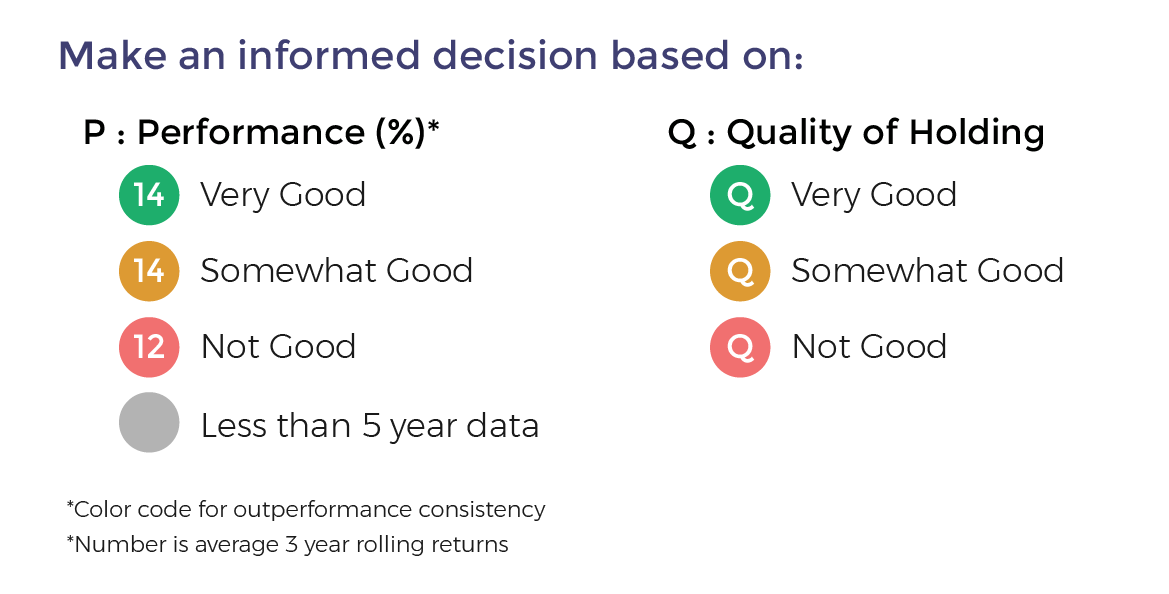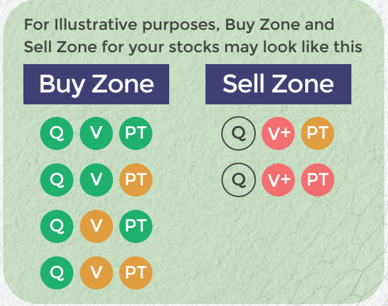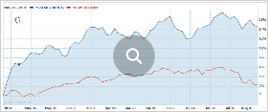Vedant Fashions
Vedant Fashions is coming out with a 100% book building; initial public offering (IPO) of 3,63,64,838 shares of Rs 1 each in a price band Rs 824-866 per equity share.
Not more than 50% of the issue will be allocated to Qualified Institutional Buyers (QIBs), including 5% to the mutual funds. Further, not less than 15% of the issue will be available for the non-institutional bidders and the remaining 35% for the retail investors.
The issue will open for subscription on February 04, 2022 and will close on February 08, 2022.
The shares will be listed on BSE as well as NSE.
The face value of the share is Rs 1 and is priced 824 times of its face value on the lower side and 866 times on the higher side.
Book running lead manager to the issue are Axis Capital, Edelweiss Financial Services, ICICI Securities, IIFL Securities and Kotak Mahindra Capital Company.
Compliance Officer for the issue is Navin Pareek.
Profile of the company
Vedant Fashions is the largest company in India in the men’s Indian wedding and celebration wear segment. The company’s ‘Manyavar’ brand is a category leader in the branded Indian wedding and celebration wear market with a pan India presence, as of Financial Year 2020. It has established a multi-channel network and introduced brands by identifying gaps in the under-served and high-growth Indian wedding and celebration wear category. It focus on spreading India’s vibrant culture, traditions and heritage through its aspirational yet value for money brands at a diverse range of price points. It offers a one-stop destination with a wide-spectrum of product offerings for every celebratory occasion and aim to deliver an aristocratic yet seamless purchase experience to its customers through its aesthetic franchisee-owned exclusive brand stores.
The company’s portfolio of products includes a diverse range of attires and accessories, each conceptualized by its designers who have experience in serving the distinct regional preferences of the Indian customer. Its products are manufactured by artisans having an abundance of expertise in the Indian wedding and celebration wear market, supplemented by its own ingrained knowledge of the demands of Indian festivals and weddings. Its wedding portfolio also includes different ranges of creations for different members of the wedding entourage, besides unique personalization for the bride and the groom. Over the years, it has built longstanding relationships with vendors and artisans, which have been critical towards it being able to command a dominant position in a market that was conventionally an unorganized market.
Proceed is being used for:
Achieving the benefits of listing the equity shares on the stock exchanges.
Carrying out the Offer for Sale of up to 36,364,838 equity shares by the selling shareholders.
Industry overview
The size of the ready-made garment (RMG) retail market is estimated to have grown at a CAGR of approximately 9% to Rs 5.7 trillion between Financial Years 2015 and 2019. However, the segment faced consumption slowdown in Financial Year 2020. Growth is estimated to have impacted in Financial Year 2021 because of pandemic-induced slowdown and the ban on sale of non-essentials during most part of first quarter. Further, lower discretionary spending, delays in the opening of malls and lower footfalls impacted demand. Financial Year 2021 witnessed a decline of 30% to 32% due to the impact of the pandemic. The first and second quarters of Financial Year 2021 were the most impacted among the four quarters. In Financial Year 2022, the second wave of COVID-19 continued to impact sales in the first quarter, but sales are expected to pick up from the second and third quarters, and the fourth quarter is expected to witness a growth over the pre-pandemic levels of Financial Year 2020. The market size is projected to reach Rs 4.75 trillion to Rs 4.85 trillion with approximately 25% to 27% growth in Financial Year 2022, driven by low base, new store additions, rebound in economic activity, pent-up demand, changing consumer lifestyle, growing brand awareness and opening up of the nation after the COVID-19-induced lockdown.
The share of men’s wear, which accounted for approximately 42% in Financial Year 2020, is estimated to have increased to approximately 43% in Financial Year 2021, as women and kids were confined mostly to homes, leading to a fall in the contribution of women’s wear in Financial Year 2021. The share of kids’ wear is estimated to have remained at similar levels as that of Financial Year 2021. During the year, due to an increase in workfrom-home culture, demand for casual- and comfort-wear categories are estimated to register higher growth than formal- and ethnic-wear categories. Men’s wear, which is the largest apparel segment with an estimated market share of 42% in Financial Year 2020, has been growing at a slower pace of 9% CAGR (in value terms) between Financial Years 2015 and 2019 vis-avis women’s and kids’ wear segments, each of which recorded a CAGR of approximately 9.5% to 10% during the same period. Further, in the women and kids’ wear categories, the share of casual wear and comfort wear increased with more people working from home and schools remaining closed. The pandemic has led to a fall in demand for formal wear and school uniforms.
Pros and strengths
Market leader in the Indian celebration wear market: The company’s ‘Manyavar’ brand is a category leader in the branded Indian wedding and celebration wear market with a pan-India presence. It has established a multi-channel network and introduced brands by identifying gaps in the under-served and high-growth Indian wedding and celebration wear category. Its significant product portfolio curated at a diverse range of price points enables it to remain aspirational and yet value for money to the Indian consumers. It is the largest company in India in the men’s Indian wedding and celebration wear segment in terms of revenue, OPBDIT and profit after tax for the Financial Year 2020. It is now focused on further enhancing its leadership position and establishing its dominance in the premium and value segments of the men’s Indian wedding and celebration wear market through its brands, Twamev and Manthan. Parallelly, it is also focused on expanding its presence in the women’s Indian wedding and celebration wear market through its brand, Mohey. Its diverse portfolio of leading and differentiated brands, including its acquisition of Mebaz, enables it to better cater to the needs of its customers and increase the range and diversity of its products, thereby achieving its goal of catering to aspirations of the entire family.
Differentiated business model combining the strengths of retailing with branded consumer play: The company aims to deliver a uniform country-wide experience to its customers through a combination of its strong retailing proposition supported by its omni-channel network and the strength of its brands. Given its seasonagnostic designs and aspirational brand appeal, it employs consistent pricing of its creations across India. It has not offered any end-of-season sales or discounts for its Manyavar brand. Its retail strategy is primarily focused on delivering a consumer-centric experience and it consistently endeavour to launch on-trend designs throughout the year. As its sales are primarily channelled through EBOs, it is able to collect secondary sales data that it utilizes to analyse consumer buying behaviour. This helps it develop a better understanding of evolving consumer preferences in the various micro-markets in which it operate and drive its supply chain and merchandise mix in an efficient manner. Moreover, as its inventory system is ERP-based and updated on a real time basis, it is able to ensure that its inventory is replenished to an optimal level at all times.
Omni-channel network with the seamless integration of offline and online channels: The company operates an omni-channel network and engage with its customers through an integrated platform serviced by its online and offline channels. This enables it to deliver a deeper connect with its customers and deliver a superior customer experience. The seamless integration between its offline and online channels also ensures that its products are available to its customers through their preferred mode of retail. As of September 30, 2021, it had a total retail space (across EBOs and shop-in-shops) aggregating to over 1.2 million square feet across 212 cities and towns in India and 8 cities internationally, and a retail footprint of 535 EBOs in India (including 58 shop-in-shops) and 11 EBOs overseas across the United States, Canada and the UAE, which are countries with a large Indian diaspora. Through its online channel, its customers also has the ability to place orders through its website (www.manyavar.com), its mobile application and leading lateral e-commerce platforms and the flexibility to research products online with the option to visit its stores for trials and fittings.
Technology-based strong supply chain and inventory replenishment systems: The company’s business model is driven by the strength of its system-driven technology infrastructure, its established systems and processes and its longstanding relationships with its vendors. Its entire supply chain and inventory management process is system-driven and algorithmically managed with every stage in its supply and distribution chain driven through data analysis and automation, including the procurement of materials, warehouse inventory management, store replenishment and new store opening fill. As its integrated secondary sales network is supervised by it, it is able to utilise sales data to track and manage its inventory on a real-time basis and analyse consumer buying behaviour, which it can utilise to better understand the preferences of its consumers and backward integrate into its supply chain. Its algorithm-based inventory management system provides it with a real-time view of store inventory and the ability to effectively monitor and manage inventory levels at EBOs, thereby minimizing dead stock. As a result, it has visibility of the products as they are sold at its stores, and it synchronise inventory levels at its stores and warehouses periodically.
Risks and concerns
Business highly concentrated on Indian wedding and celebration wear: The company’s business is currently highly concentrated on a single discretionary product category - Indian wedding and celebration wear. Its sales of Indian wedding and celebration wear are dependent on a number of factors, and may decline as a result of increased competition, regulatory action, pricing pressures or fluctuations in the demand for or supply of its products and other factors outside its control. In particular, its business is characterized by rapidly-changing customer preferences. Its results of operations are dependent on its ability to attract customers by anticipating, gauging and responding to such changes in customer preferences, and design new attires and accessories or modify its existing products in line with changes in fashion trends as well as customer demands and preferences. The number of customers demanding mid-premium and premium Indian wedding and celebration wear may not continue to increase, or its customers may not consider its premium celebration wear preferable to the alternatives. Demand for Indian wedding and celebration wear is dependent on the frequency and volume of weddings, festivals and other celebrations. It is affected by seasonal variations, which may cause its revenues to vary between different quarters in a financial year. Seasonal variations include the peak wedding season in India as well as other celebrations and festival events.
Business prospects depend on strength of key brand: The company has three distinctive brands in the men’s ethnic and celebration wear market, Manyavar, Twamev and Manthan, a women’s ethnic and celebration wear brand, Mohey, as well as a regional heritage brand catering to the entire family, Mebaz. Its brand names, images and recognition are key factors in customers’ decision-making of purchasing ethnic and celebration wear, and thus are critical to maintaining and expanding its customer base. It has leveraged the strength and image of its brands to grow and scale its operations. By owning multiple brands catering to the Indian wedding and celebration wear market and operating each brand within the same omni-channel network, it is able to up-sell and cross-sell its products through its existing retail channels. It cannot assure that it will be able to successfully maintain or enhance the recognition and reputation of any of its brands and any inability to do so may adversely affect its business and competitiveness.
Rely on outsourcing significant proportion of production processes and activities to third-parties: For a large portion of the company’s attires and accessories, it engages third-party manufacturers (jobbers) to manufacture such products on its behalf. These jobbers perform the different stages of the manufacturing process, including cutting, embroidery, stitching and finishing, with the final products sold by it under its brands. It relies on its jobbers and vendors to provide it with an uninterrupted supply of its products. However, it cannot assure that they may do so in a timely manner, or if at all. While it has long-term relationships with certain major jobbers and many of its jobbers only work for it, they may decide not to accept its future orders on the same or similar terms, or at all. It has subsisting service contracts with some of its major jobbers (on the basis of total job charges), which are terminable by it on various grounds specified in such contracts. It may face the risk of its competitors offering its jobbers better terms, which may cause them to cater to its competitors alongside, or even instead of it. They may discontinue their work on short notice and its production process may be stalled or hindered due to this. Conversely, due to increased customer demand for its products, it may need to obtain more products from more jobbers, and any inability to do so may render it unable to execute its growth strategy.
Industry is competitive in both offline and online channels: The celebration wear industry in India is competitive, with several regional brands and unorganized retailers present in local markets across the country. The Indian celebration wear industry has been a highly unorganized market. The company’s products compete with local retailers, non-branded products, economy brands and products of other established brands. In the future, some of its competitors may develop alliances to compete against it, acquire greater resources, market presence and geographic reach, as well as develop products with better brand recognition than its. Some of its competitors may be able to procure raw materials or finished products at lower costs than it, and consequently be able to sell their products at lower prices. As a result, its competitors may be able to withstand industry downturns better than it or sell their products at more competitive prices. Further, its competitors may be able to negotiate better or more favorable terms with such online retailers. Any inability on its part to further develop its own brand websites or enter into agreements with online retailers on terms favorable to it may have an adverse effect on its pricing, and its business and results of operations may be adversely affected.
Outlook
Vedant Fashions caters to the Indian celebration wear market with a diverse portfolio of brands. The company offers a one-stop destination with a wide-spectrum of product offerings for every celebratory. The company's brands include (Manyavar, Mohey, Mebaz, Manthan, and Twamev. Its products include men’s ethnic and celebration wear items such as Indo-western, sherwanis, kurtas, jackets and accessories such as jutti, safa, mala, and women’s ethnic and celebration wear items such as lehengas, sarees, stitched suits, gowns and kurtis. It focus on spreading India’s vibrant culture, traditions and heritage through its aspirational yet value for money brands at a diverse range of price points. Its products are manufactured by artisans having an abundance of expertise in the Indian wedding and celebration wear market, supplemented by its own ingrained knowledge of the demands of Indian festivals and weddings. The company is asset-light in respect of its plant, property and equipment which enables it to achieve a high return on capital employed, primarily due to the nature of its sourcing and manufacturing operations, with a substantial majority of its sales being generated through its franchisee-owned EBOs. On the concern side, the company’s products may contain quality issues or undetected errors or defects, especially when first introduced or when new products are developed, resulting from manufacturing defects and negligence in storage or handling of its products or other raw materials. Besides, its operations and supply chain could be adversely affected by labour shortages, increased labour costs or work stoppages by its employees, those of its franchisees, its jobbers and its suppliers.
The issue has been offered in a price band of Rs 824-866 per equity share. The aggregate size of the offer is around Rs 2996.46 crore to Rs 3149.19 crore based on lower and upper price band respectively. On the performance front, the company’s total income decreased by 34.07% to Rs 625.02 crore for the financial year 2021 from Rs 947.98 crore for the financial year 2020, due to a decrease in revenue from operations. Its profit for the financial year 2021 decreased by 43.84% to Rs 132.90 crore from Rs 236.63 crore for the financial year 2020. The company intends to focus its expansion effects in markets where it determine there is an increasing demand for its products, and where it can leverage its existing presence to expand its market share. It aims to deepen its connection with its customers and extend buying opportunities beyond the wedding ceremony to other celebrations. It also intends to continue to leverage on its in-depth market research, robust technology platform and data analytics to introduce a wider range of products within the Indian wedding and celebration wear market, thereby consolidating its leadership position. In addition to strengthening and expanding the reach of its existing brands, it aims to acquire other brands opportunistically.































